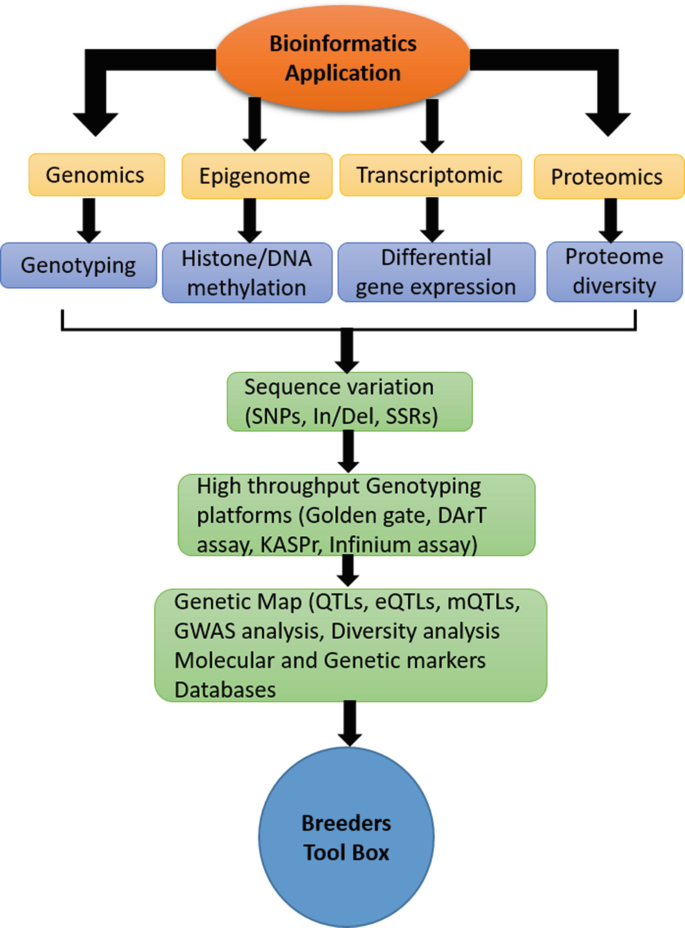Bioinformatics Tutor for Dummies
Bioinformatics Tutor for Dummies
Blog Article
The Only Guide for Bioinformatics Tutor
Table of ContentsWhat Does Bioinformatics Tutor Do?How Bioinformatics Tutor can Save You Time, Stress, and Money.Rumored Buzz on Bioinformatics TutorThe Facts About Bioinformatics Tutor RevealedThe Greatest Guide To Bioinformatics Tutor
First project growth is rather taxing, as it involves cautious planning of the subject, structuring of deliverables, and consideration of the abilities and experience degrees of participants. Nonetheless, once a job has been plainly defined and implemented, it has the prospective to be recycled in future sessions with only small modifications to reflect updates in the area or fit distinctions in individual backgrounds. This makes project-based learning a sustainable and effective teaching approach in the future, specifically in quickly advancing self-controls like bioinformatics.To ensure continuity and reproducibility of learning, supplying shared laboratory note pads-- either digital or physical-- is crucial. These note pads serve as joint logs where trainees can record their development, code, methodologies, and results throughout the program. Not just do they enhance discovering by urging documentation and reflection, yet they also act as post-course referral materials that individuals can get in touch with in future research or academic tasks.
Mentors play an essential function in the success of project-based programs. Preferably, advisors should be active scientists with a up-to-date and comprehensive understanding of both the theoretical foundations and useful applications of bioinformatics in their particular self-controls. Their capacity to bridge complicated ideas and real-world execution is vital in aiding pupils browse the challenges of interdisciplinary research. Furthermore, mentors also serve as function designs and influence trainees to continue seeking jobs in computational biology and relevant areas.
See This Report on Bioinformatics Tutor
Another secret element of the knowing procedure is supplying participants the possibility to present their work to others, specifically to an audience past their immediate task group. Final presentations or mini-conferences permit students to express their findings, get constructive comments, and gain confidence in communicating scientific content. This presentation part is commonly a favored amongst students, as it validates their efforts and highlights the real-world importance of their work.
The performance of this strategy was confirmed by the overwhelmingly favorable feedback received after the preliminary course was provided. The success prompted repeat offerings of the same program style in 2015 and 2016. Each iteration of the program was fine-tuned based on individual responses and evolving ideal practices in rearing. These adjustments guaranteed that the core purposes-- hands-on learning, partnership, and applied problem-solving-- remained intact while increasing the deepness and breadth of subjects covered.
A significant visualization that captured individual sentiment was a word cloud generated from reactions to the 2014 end-of-course survey. Individuals were asked, "What was the ideal part of the program?" and their feedbacks were put together right into a graphical word cloud. In this representation, the dimension of each word shows exactly how frequently it was stated, with words like "hands-on," "collaboration," "real-life issues," "support," and "interactive" showing up most prominently. This visual feedback enhanced the program's focus on experiential knowing and advisor assistance.
The contributions of individuals such as Rustici, G., Orchard, S., Cowley, A., and Twells, R., along with other participants of the EBI user-training-working group, were important in fine-tuning the course structure and web content. Their understandings aided shape a versatile and comprehensive model that can be adjusted to different institutional and regional contexts.
The 6-Second Trick For Bioinformatics Tutor

Jones, Rasmussen, read more and Moffitt (1997) additionally promoted for interdisciplinary knowing via collective project job, noting its ability to simulate specialist environments and prepare students for future academic or industry functions. In a thorough evaluation, Thomas (2000) assessed numerous studies on PBL and wrapped up that students not only execute well academically yet additionally establish a deeper understanding of the subject matter and boosted teamwork abilities.
In the context try here of bioinformatics education and learning, ingenious approaches like classroom games and simulation-based training have actually also been used. Schneider and Jimenez (2013) presented the usage of interactive games to educate organic information integration, allowing pupils to grasp complex ideas via experiential knowing. This type of gamification matches the hands-on discovering stressed in project-based training courses by presenting an aspect of enjoyable and competitors, which can better enhance involvement.
Going back to the training course talked about here, the lessons picked up from the execution of project-based understanding in a bioinformatics establishing have broader effects for other STEM areas. The method highlights not just technical efficiency, however additionally interaction, cooperation, and important thinking-- abilities that are increasingly valued in both academia and sector.
9 Simple Techniques For Bioinformatics Tutor
The scalability of the training course style additionally makes it a feasible version for other organizations. With ideal personalization based upon local demands, offered resources, and participant profiles, the structure can be reproduced or adjusted for use in various other clinical domain names. Additionally, the addition of organized mentorship and assessment techniques assists make sure constant high quality and quantifiable knowing results.

To conclude, project-based knowing in bioinformatics provides a powerful technique to mentor facility, interdisciplinary material in a manner that is both easily accessible and intellectually promoting. By emphasizing cooperation, practical application, and vital inquiry, such efforts not just boost specific discovering however likewise add to the cultivation of a new generation of experienced and innovative scientists.
The 7-Second Trick For Bioinformatics Tutor

An additional trick element of the learning procedure is offering individuals the possibility to offer their work to others, particularly to a target market beyond their instant project group.In the wider academic literature, project-based knowing (PBL) has actually been thoroughly studied and verified as a reliable technique for advertising deep understanding, vital reasoning, and transferable skills. Adderley et al. (1975) stressed the value of task techniques in higher education and learning, keeping in mind that they advertise energetic knowing and freedom. Schneider and Jimenez (2013) introduced the usage of interactive video games to teach organic information integration, making it possible for students to realize complex concepts through experiential discovering.
Report this page